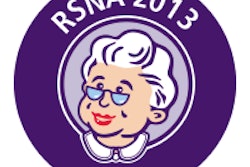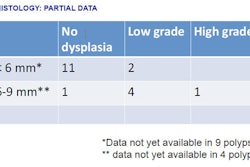CHICAGO - The vast majority of radiologists appear to understand the Fleischner Society's guidelines on management of small pulmonary nodules incidentally detected on routine chest CT scans. But that knowledge may not necessarily translate into actual conformance, according to research presented Wednesday at the RSNA meeting in Chicago.
"Efforts are necessary to bridge the gap between awareness and implementation of the Fleischner guidelines," said presenter Dr. Ronald Eisenberg, of Beth Israel Deaconess Medical Center in Boston.
In 2005, the Fleischner Society issued its Guidelines for the Management of Incidentally Detected Lung Nodules, which provide management recommendations based on nodule size and whether the patient is low or high-risk.
To evaluate radiologists' familiarity with the guidelines and to determine whether their management decisions were consistent with these recommendations, the researchers emailed an electronic questionnaire to 7,000 radiologists selected from the RSNA's membership. The survey was limited to U.S. residents to achieve a sample of radiologists with similar healthcare and medicolegal environments.
The major questions of the survey addressed awareness of the guidelines, the existence of a written policy for incidental nodules, whether the respondent was in a teaching practice setting, chest fellowship training, years of practice experience, and the current tube settings for routine chest CT and follow-up CT scans.
The survey respondents were asked to provide their recommendations for three clinical scenarios:
- Younger than 40
- Older than 40 with minimal or absent smoking history and no previous malignancy
- Older than 40 with a history of smoking or other risk factor for malignancy, but no prior malignancy
Respondents were asked to choose from six management options, including: no follow-up with nodule not mentioned in report; no follow-up with nodule mentioned in report; short-term CT follow-up in three to six months; intermediate CT follow-up in 12 months; biopsy or surgical resection; and considered malignant or metastatic.
The responses were then compared with Fleischner guidelines for each of the three clinical scenarios.
Of the 834 responses, 679 (77.7%) were aware of the guidelines. Written policies were present in 490 (58.7%) practices.
However, the respondents that were aware of the guidelines made recommendations consistent with them in only 69% of cases in scenario 1, 47% in scenario 2, and 42.1% in scenario 3. As for CT tube settings, 50% of respondents did not know their mAs settings.
"Of those who did, the spectrum of responses were similar for those aware and not aware of the Fleischner guidelines," he said.
Despite relatively high rates of awareness and implementation of the guidelines, radiologists showed varying degrees of conformance with the recommendations, Eisenberg concluded.
By Erik L. Ridley
AuntMinnie.com staff writer
December 3, 2009
Related Reading
Italian study backs tomosynthesis over DR for lung pathology, February 18, 2009
Digital tomosynthesis beats standard DR in finding chest lesions, August 11, 2008
Automated analysis tools vary in pulmonary nodule measurements, June 25, 2007
Pulmonary nodule decisions must be individualized, August 16, 2006
Copyright © 2009 AuntMinnie.com



















